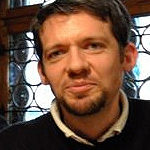West coast of Cocha Yarima Lake, the Rio Nanay oxbow, Peru
4th place in Biotope Aquarium Design Contest 2017
![]() Poland. Bartłomiej Paśnik
Poland. Bartłomiej Paśnik

Volume: 375 L
Dimensions: 150x50x50 cm
List of fishes: Hyphessobrycon bentosi, Apistogramma Bitaeniata, Carnegiella strigata, Corydoras agassizii, Carnegiella marthae.
List of plants: Sagittaria subulata, Echinodorus grisebachii, Eichhornia crassipes, Pistia Stratiotes, Hydrocotyle leucocephala.
Description of decorations: The substrate is sand, covered with roots, deadwood and pods. Reeds grow from the sand.
Description of equipment: Filtration: Aquael Unimax 700 1700l/h, Lighting: Daylight simulation based on LED modules 40W. DIY
Water parameters: Temperature 26°C, GH – 5°dH, KH – 2°dH, pH 6,5.
Description of the area surrounding the biotope: Cocha Yarima” is one of the many small lakes in northern Peru. Located about 25km westof Iquitos. It was created by the meanders of the Nanay River. The lake has an area of 0.16km2, situated 94m above sea level with 3km ofcoastline, the average depth is 2 meters. There is a tropical climate with average temperature of 23°C. The warmest month is October with the average temperature of 24°C and the coldest month is June with the temperature of 21°C. Rainfall is 3233mm per year. Nanay River is Black Water, which is surrounded by forest. This type of woodland consists of a group of trees such as Ceticos, Cataguas and Chontas. Trees there are not high and do not form dense primary forest. The rainy season starts in September / October, which causes an increase in water level, then it falls again in May / June. There are no conventional seasons (Spring, Summer, Autumn, Winter). In other words, the river determines the season.
Description of the underwater landscape of the biotope: Vegetation in the river is negligible, more variety of plants can be meet in the oxbowwhere the river current is low or not at all. Plants that we can meet there are Eichhornia crassipes, Pistia Stratiotes, and various species ofEchinodorus. The sandy bed is covered with leaves and dead wood. The edges are thickly overgrown with the roots of coastal trees and are ideal for small fish such Apistogramma, Corydoras, Pterophyllum scalare, Symphysodon discus and many species of Characidae. Unfortunately, as all oxbow, Cocha Yarima are slowly being absorbed by the jungle, new ones are being created in their place. Wonderful endless cycle of nature.
Description of the parameters of the habitat: Water temperature fluctuates between 26-28°C, pH is 5.8 – 7.0
List of fishes: Acestrorhynchus falcirostris, Acestrohynchus microlepis, Brycon pesu, Chalceus erytrurus, Chalceus macrolepidotus, Characidium fasciatum, Charax gibbosus, Hemigrammus unilineatus, Hemigrammus ocellifer, Hyphessobrycon bentos, Hemigrammus pulcher, Hyphessobrycon erytrostigma, Hyphessobrycon serpae, Hyphessobrycon loretoensis ,Metynnis hypsauchen, Moenkhausia oligolepis, Myleus rubripinnis, Myleus schomburgki, Mylossoma duriventris, Mylossoma aureum, Petitella georgiae, Serrasalmus rhombeus, Ttriportheus elongatus, Triportheus albus, Carnegiella schereri, Carnegiella strigata, Gasteropelecus sternicla, Apistogramma bitaeniata, Apistogramma cacatuoides, Aequidens tetramerus, Biotodomo cupido, Cichla monoculus, Cichlasoma amazonarum, Crenicichla anthrurus, Crenicara puntulatum, Heros severum, Mesonauta festivus, Pterophyllum scalare, Satanoperca jurupari, Corydoras sychri, Dianema longibarbis, Corydoras Agassizi.
List of plants: Limnobium laevigatum, Sagittaria subulata, Echinodorus grisebachii, Salvinia natans, Eichhornia crassipes, Pistia Stratiotes, Hydrocotyle leucocephala, Echinodorus Amazonicus.
Sources of information:
- http://aquarionanay.canalblog.
com/ - http://www.aquatechnics.net/
nanay.htm - https://www.lakepedia.com/
lake/cocha–yarima.html - https://ceb.wikipedia.org/
wiki/Cocha_Yarima - http://forum.simplydiscus.com/
showthread.php?26263-Rio– Nanay-Biotope - http://fieldguides.
fieldmuseum.org/sites/default/ files/rapid-color-guides-pdfs/ 129_Rio_Nanay-Comunes_v1.0_1. pdf - https://www.youtube.com/watch?
v=kqgDW4_1YyI&t=397s - https://www.youtube.com/watch?
v=_iitxewO7Wk - https://www.youtube.com/watch?
v=a4LcFleFmFs - https://mapcarta.com/es/
25136732
Comments of the members of the jury of Biotope Aquarium Design Contest 2017

It is a large-scale work. It attracted me by the fact that the author was brave enough to recreate a biotope of the South American lake (usually river systems are copied) and did not lose. It turned out very natural and beautiful.

This was my favourite of all. The artistry, realism, and attention to fine detail in this oil painting come to life made an immediate impression. It is hypnotically soothing to look at. Theatrical use of light and shadow conjure up a moody, sun-dappled oxbow backwater choked with vegetation and plant debris. The use of long, dead grass convincingly portrays marginal reeds and grasses to frame this painting. Spidery tangles of twigs weave between the feathery fronds of aquatic plants; a botanist’s collection of rainforest leaves litter the sandy substrate; smaller grasses protrude from between the leaf litter. All these small touches present a candid living portrait of a natural cycle of growth and decay, organically unfolding, as though we happened upon it by pure chance and just stayed there quietly spying. Naturally, the inhabitants are perfectly at home here with each occupying its specialized niche and displaying its instinctive behaviour: tetras darting among the twigs, hatchetfish lurking near the surface sheltered by floating plants, corys sweeping the dusted leaves, and Apistogramma foraging among the humus and debris. What’s extraordinary here is the balance of aesthetics and wild randomness. Nothing looks staged. The overall composition is harmonious, and each corner of it maintains its integrity when closely examined. The effect is one of deep satisfaction at having discovered a splendid wild scene that appears for your eyes only.
